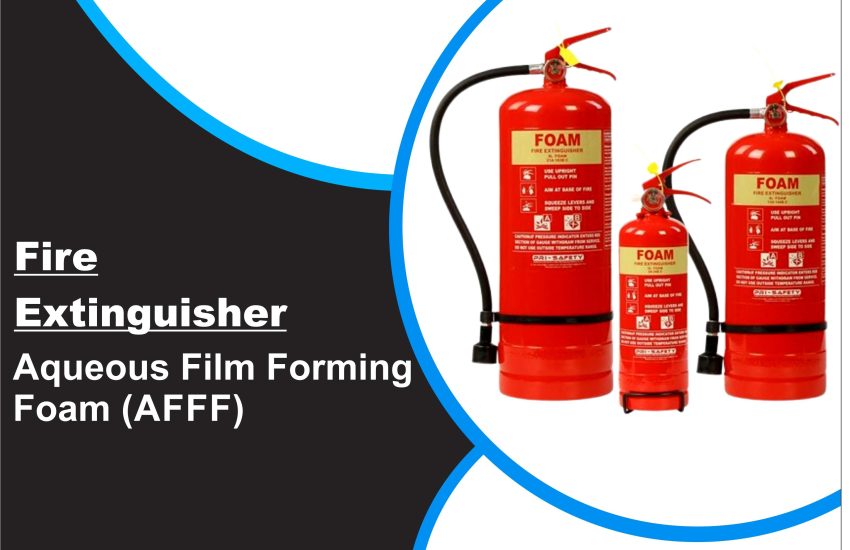Aqueous Film Forming Foam (AFFF) is a highly effective firefighting foam used for controlling and extinguishing Class B fires, which involve flammable liquids like gasoline, oil, and jet fuel. Developed for military and industrial use, AFFF forms a thin aqueous film that spreads over the fuel surface, cutting off the oxygen supply and quickly smothering the flames.
Moreover, AFFF is commonly used in foam fire suppression systems at airports, oil refineries, chemical plants, and marine facilities.
How Aqueous Film Forming Foam (AFFF) Works
When discharged, AFFF foam creates a stable blanket that covers the flammable liquid. This foam layer blocks vapors from escaping and prevents re-ignition. Additionally, the water content in AFFF helps cool down the surface, enhancing its fire suppression capability.
Unlike dry chemical extinguishers, AFFF provides both vapor suppression and cooling action, which makes it ideal for large-scale fire emergencies.
Common Applications of AFFF Fire Extinguisher
An AFFF fire extinguisher or system is suitable for:
- Class B fires involving gasoline, diesel, or paint thinners
- Aircraft hangars and airport runways
- Oil and gas storage facilities
- Chemical manufacturing plants
- Marine vessels and shipyards
In addition to its industrial use, some commercial buildings also use AFFF in their fire protection systems due to its fast-acting capabilities.
Benefits of AFFF Firefighting Foam
Using AFFF firefighting foam offers multiple benefits:
- Quick flame knockdown on flammable liquid fires
- Prevents re-ignition by creating a long-lasting foam blanket
- Cools the fuel surface to reduce the fire’s intensity
- Compatible with various fire suppression systems
- Effective across wide surface areas
Furthermore, AFFF is available in portable fire extinguishers and large-scale systems, making it adaptable for different environments.
Environmental and Health Considerations
Although effective, AFFF contains fluorinated chemicals, such as PFAS (per- and polyfluoroalkyl substances), which have raised environmental and health concerns. As a result, many countries and industries are shifting toward fluorine-free firefighting foams that offer similar performance with less environmental impact.
Therefore, always handle and dispose of AFFF in accordance with local hazardous materials regulations and guidelines.
Maintenance and Inspection Aqueous Film Forming Foam (AFFF) Systems
To ensure safety and compliance, it’s essential to inspect AFFF fire suppression systems and extinguishers regularly. Key tasks include:
- Checking foam concentrate levels
- Inspecting discharge nozzles and piping
- Conducting flow tests to ensure coverage
- Replacing expired or contaminated foam
Regular maintenance not only extends the system’s life but also guarantees full performance during a fire emergency.
Transitioning to Eco-Friendly Alternatives
Due to increasing regulations on PFAS compounds, many industries are exploring environmentally friendly alternatives to AFFF. Fluorine-free foams now offer comparable effectiveness for Class B fire suppression, making them suitable replacements in many applications.
Switching to sustainable options helps meet compliance standards while reducing long-term health and environmental risks.
Conclusion
In summary, Aqueous Film Forming Foam (AFFF) remains one of the most reliable solutions for combating flammable liquid fires. Its quick action, ability to prevent re-ignition, and compatibility with various systems make it a preferred choice in high-risk environments.


